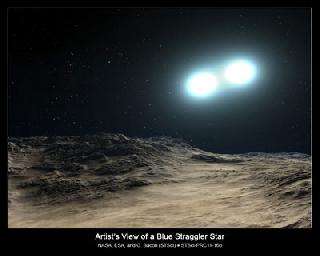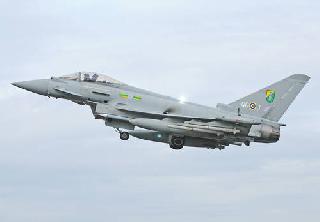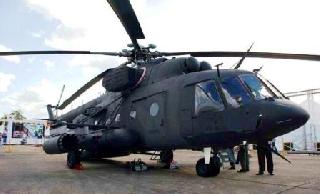
Artist's concept of a blue straggler pair. Photo: NASA, ESA, and G. Bacon (STScI).
WASHINGTON (BNS): Astronomers using NASA's Hubble Space Telescope has found a rare class of oddball stars called blue stragglers in the hub of the Milky Way, the first detected within our galaxy's bulge.
The stars are named Blue Stragglers because they seemingly lag behind in the aging process, appearing younger than the population from which they formed.
According to a common theory, Blue Stragglers emerge from binary pairs. As the more massive star evolves and expands the smaller star gains material from its companion. This stirs up hydrogen fuel and causes the growing star to undergo nuclear fusion at a faster rate. It burns hotter and bluer, like a massive young star.
"Although the Milky Way bulge is by far the closest galaxy bulge, several key aspects of its formation and subsequent evolution remain poorly understood. Many details of its star-formation history remain controversial. The extent of the blue straggler population detected provides two new constraints for models of the star-formation history of the bulge," Lead author Will Clarkson of Indiana University in Bloomington, was quoted as saying in a NASA news release.
The stars were discovered following a seven-day survey in 2006 called SWEEPS – the Sagittarius Window Eclipsing Extrasolar Planet Search – that used Hubble to search a section of the central portion of the Milky Way galaxy, looking for the presence of Jupiter-sized planets transiting their host stars. During the search, which examined 180,000 stars, Hubble spotted 42 blue stragglers.
Of the 42 it’s estimated that 18 to 37 of them are genuine.
"The SWEEPS programme was designed to detect transiting planets through small light variations. Therefore the programme could easily detect the variability of binary pairs, which was crucial in confirming these are indeed blue stragglers, Kailash Sahu, the principal investigator of the SWEEPS programme added.
 Previous Article
Previous Article Next Article
Next Article











The Indian Air Force, in its flight trials evaluation report submitted before the Defence Ministry l..
view articleAn insight into the Medium Multi-Role Combat Aircraft competition...
view articleSky enthusiasts can now spot the International Space Station (ISS) commanded by Indian-American astr..
view article